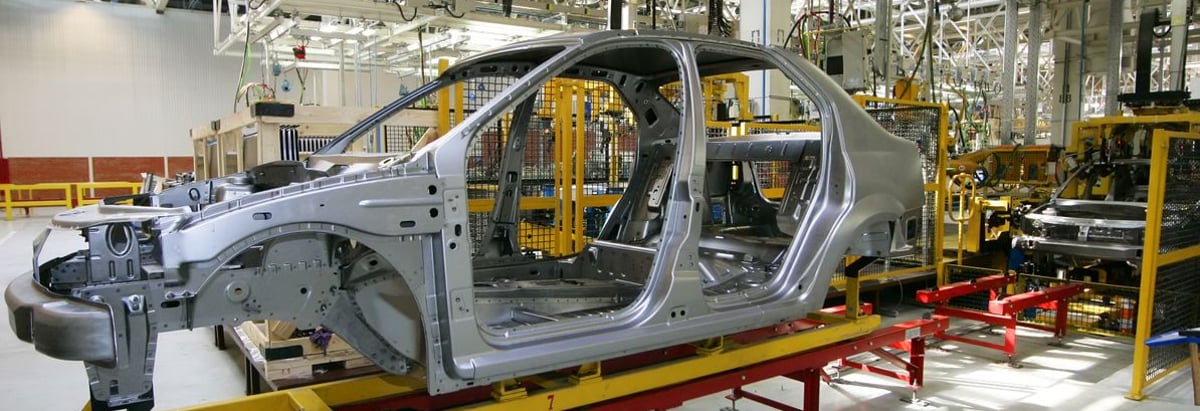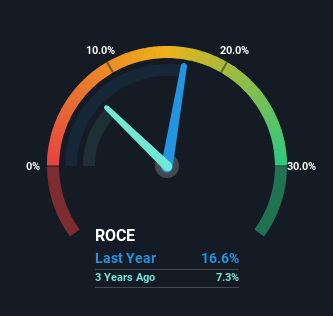We Like These Underlying Return On Capital Trends At Maruti Suzuki India (NSE:MARUTI)

If we want to find a potential multi-bagger, often there are underlying trends that can provide clues. Ideally, a business will show two trends; firstly a growing return on capital employed (ROCE) and secondly, an increasing amount of capital employed. Put simply, these types of businesses are compounding machines, meaning they are continually reinvesting their earnings at ever-higher rates of return. Speaking of which, we noticed some great changes in Maruti Suzuki India's (NSE:MARUTI) returns on capital, so let's have a look.
Return On Capital Employed (ROCE): What Is It?
Just to clarify if you're unsure, ROCE is a metric for evaluating how much pre-tax income (in percentage terms) a company earns on the capital invested in its business. Analysts use this formula to calculate it for Maruti Suzuki India:
Return on Capital Employed = Earnings Before Interest and Tax (EBIT) ÷ (Total Assets - Current Liabilities)
0.17 = ₹148b ÷ (₹1.2t - ₹260b) (Based on the trailing twelve months to June 2024).
Thus, Maruti Suzuki India has an ROCE of 17%. In isolation, that's a pretty standard return but against the Auto industry average of 21%, it's not as good.
Check out our latest analysis for Maruti Suzuki India

Above you can see how the current ROCE for Maruti Suzuki India compares to its prior returns on capital, but there's only so much you can tell from the past. If you'd like to see what analysts are forecasting going forward, you should check out our free analyst report for Maruti Suzuki India .
What Does the ROCE Trend For Maruti Suzuki India Tell Us?
Maruti Suzuki India is displaying some positive trends. Over the last five years, returns on capital employed have risen substantially to 17%. Basically the business is earning more per dollar of capital invested and in addition to that, 79% more capital is being employed now too. So we're very much inspired by what we're seeing at Maruti Suzuki India thanks to its ability to profitably reinvest capital.
The Key Takeaway
A company that is growing its returns on capital and can consistently reinvest in itself is a highly sought after trait, and that's what Maruti Suzuki India has. And a remarkable 102% total return over the last five years tells us that investors are expecting more good things to come in the future. Therefore, we think it would be worth your time to check if these trends are going to continue.
Like most companies, Maruti Suzuki India does come with some risks, and we've found 2 warning signs that you should be aware of.
If you want to search for solid companies with great earnings, check out this free list of companies with good balance sheets and impressive returns on equity.
New: Manage All Your Stock Portfolios in One Place
We've created the ultimate portfolio companion for stock investors, and it's free.
• Connect an unlimited number of Portfolios and see your total in one currency
• Be alerted to new Warning Signs or Risks via email or mobile
• Track the Fair Value of your stocks
Have feedback on this article? Concerned about the content? Get in touch with us directly. Alternatively, email editorial-team (at) simplywallst.com.
This article by Simply Wall St is general in nature. We provide commentary based on historical data and analyst forecasts only using an unbiased methodology and our articles are not intended to be financial advice. It does not constitute a recommendation to buy or sell any stock, and does not take account of your objectives, or your financial situation. We aim to bring you long-term focused analysis driven by fundamental data. Note that our analysis may not factor in the latest price-sensitive company announcements or qualitative material. Simply Wall St has no position in any stocks mentioned.
About NSEI:MARUTI
Maruti Suzuki India
Engages in the manufacture, purchase, and sale of motor vehicles, components, and spare parts primarily in India.
Excellent balance sheet average dividend payer.
Similar Companies
Market Insights
Community Narratives



